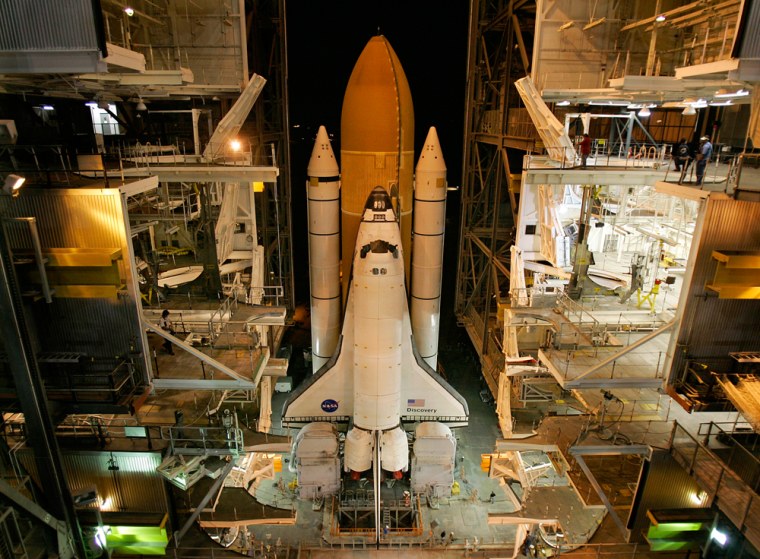Several days after space shuttle Discovery arrives at the international space station, some of the lights will go out. Some communications with Mission Control will stop. Backup power will be lost.
That may sound scary for the astronauts orbiting 220 miles (350 kilometers) above Earth, but they’ll be ready for it. The space lab is only getting rewired.
Parts of the U.S. section of the space station will be powered down during Discovery’s visit this month as spacewalking astronauts reconnect the space lab’s electrical system from a temporary to a permanent power source.
“It’s kind of like leaving the power on in your house and rewiring the east wing without turning off the main breaker — and in the meantime, your family is running the computer,” said Joy Bryant, program manager of the space station for Boeing, the prime contractor.
Discovery is set for a nighttime launch on Thursday, the start of 12 days in space. It will be the first night launch in four years.
And this mission will have more rookie astronauts than any flight in years — five have never been to space before. The two veterans are Mark Polansky, the commander, and Robert Curbeam, who will spacewalk three times. The others are pilot William Oefelein, and mission specialists Joan Higginbotham, Nicholas Patrick, Sunita Williams and the European Space Agency’s Christer Fuglesang, who will become the first Swede in space.
Discovery will deliver an $11 million addition to the space lab, release three small satellites on the return trip home and bring home one of the space station’s three crew members, German astronaut Thomas Reiter of the European Space Agency. U.S. astronaut Williams will replace him, staying for six months.
If the launch doesn’t get off Dec. 7, NASA can keep trying through Dec. 17. After that, the agency will likely call it quits until January. NASA wants Discovery back from its 12-day mission by New Year’s Eve because shuttle computers aren’t designed to make the change from the 365th day of the old year to the first day of the new year while in flight.
The space agency has figured out a solution for the New Year’s Day problem, but managers are reluctant to try it.
As for the night launch, NASA has required daylight liftoffs ever since the 2003 Columbia accident. That’s to make sure the agency could get good daytime photos of the external fuel tank in case debris fell from it during launch. Foam breaking off the tank and striking Columbia’s wing at liftoff caused the damage that led to the disaster that killed seven astronauts.
But the U.S. space agency needs to start launching shuttles at night to finish space station construction by 2010, when the shuttle program ends. NASA officials — comforted by the acceptable levels of foam loss during the last two liftoffs — now believe radar is sufficient to spot pieces falling from Discovery’s tank. Plus there are inspections in orbit to spot any unseen damage. If the space shuttle were damaged, the astronauts could seek shelter at the space station until a rescue flight came for them.
“We feel confident that we will have good capability to detect any debris that might come off,” said Wayne Hale, NASA’s space shuttle program manager.
A day after arriving, Discovery’s astronauts will attach the new 2-ton addition to the space station using robotic arms and the guidance of two spacewalking astronauts. About the size of a small cargo truck, the new addition has to clear some very close corners as it is being moved.
“Picture if you’re helping a friend park in a very tight spot,” said Tricia Mack, lead spacewalk officer. “You’re going to want to give them, ’Whoa. Back a little to the right. A little to the left.”’
During the two remaining spacewalks, half the lights in the U.S. section of the space lab will be powered down as spacewalking astronauts unplug power lines and connect them to substations that receive their power from the new solar panels that were delivered on the last mission. There will be no back-up power for the space station’s heaters and systems that control navigation, communications and guidance, although astronauts will hot-wire some systems to keep them going.
The hard part comes after the power lines are reconnected and the space station is powered back up. Pumps are needed to activate a cooling system, and those pumps haven’t been used in four years.
“It’s like putting a car in the garage,” said Kirk Shireman, deputy space station program manager. “You keep the battery charged. You come back in four years. You turn the key and you hope it starts.”
